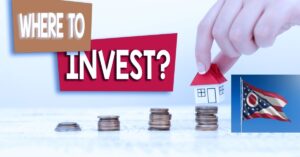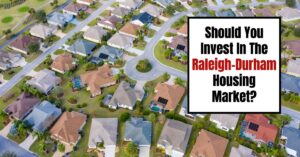When investors talk about Texas real estate, the rivalry between Houston and Dallas often sounds like a football matchup—intense, high-stakes, and constantly debated. If you are comparing Dallas vs. Houston: Which City Offers Better Returns for Real Estate Investors, the definitive answer depends entirely on your investment goal: Houston is the champion for immediate cash flow and rental yield, while Dallas offers superior long-term wealth building through property appreciation.
I’ve spent years analyzing these markets, and I can tell you that picking the wrong city can mean the difference between steady mailbox money and sitting on trapped equity. Let's break down the economics of the two biggest powerhouse metros in the state and figure out which one is the right fit for your portfolio.
Dallas vs. Houston: Which City Offers Better Returns for Real Estate Investors
The Fundamental Conflict: Cash Flow vs. Appreciation
Before we dive into the numbers, we need to understand the core conflict. Real estate investing generally involves two strategies:
- Cash Flow Strategy: You want monthly income now. You seek affordable properties where the rent minus your mortgage, taxes, insurance, and expenses equals a solid profit.
- Appreciation Strategy: You sacrifice immediate high profits for long-term equity growth. You buy in markets where values are climbing rapidly, expecting to sell for a large profit in 5 to 15 years.
In the case of Dallas and Houston, they are the textbook definition of these strategies.
In my experience, the data below is the clearest financial picture you can get right now. This is why I caution new investors to clearly define their strategy before even looking at listings.
| Factor | Houston (Cash Flow Focus) | Dallas (Appreciation Focus) |
|---|---|---|
| Median Home Price | Approx. $325,000 | Approx. $400,000 |
| Entry Cost | Significantly lower, great for new investors with limited capital. | Higher, massive institutional money drives competition. |
| Rental Yields | Higher, due to lower property costs relative to solid rental rates. | Lower, high property values “compress” the yields. |
| Cash Flow Potential | Stronger potential for immediate and higher monthly returns. | Lower initial cash flow due to higher acquisition costs. |
| Property Appreciation | Historically slower and more variable, tied to energy cycles. | Higher and more consistent. |
| Key Economic Drivers | Highly diverse, strong presence in energy, medical/healthcare, and shipping/logistics. | Finance, corporate headquarters (HQ), and tech sector investment. |
| Investment Strategy Match | Maximizing cash-on-cash returns, higher leverage opportunities. | Long-term wealth building and portfolio equity growth. |
Houston: The King of Cash Flow and Affordability
If you are a serious cash flow investor, Houston presents a compelling opportunity that Dallas simply cannot match right now. The biggest variable here is the Median Home Price. A $75,000 difference in the median price acts like a financial wall—it’s the barrier to entry for many new or intermediate investors.
When the median price is lower, several things happen that benefit the cash flow investor:
Lower Buy-In, Higher Yields
Think about the math for a moment. If you buy a $325,000 house in Houston versus a $400,000 house in Dallas (assuming 20% down, or $65,000 vs. $80,000 in cash), your mortgage in Houston is substantially smaller. A smaller mortgage means lower monthly payments.
Because rental rates across both metros are competitive—meaning rent in Houston for a similar product isn't $700 cheaper than in Dallas—that lower mortgage payment instantly translates into a wider profit margin. This is the definition of higher rental yields. I've found time and again that getting that initial cost right is 80% of the battle when chasing cash flow.
If your goal is to hit a 10% cash-on-cash return, Houston gives you a much clearer path to achieve it than Dallas. A lower purchase price also makes it easier to find value-add opportunities—properties that need a moderate renovation to boost rents, allowing you to force appreciation while maintaining strong cash flow.
Economic Diversity vs. Volatility
A common critique of Houston is its reliance on the energy sector. It is true that Houston’s market can be more volatile than Dallas’s because property values and rents historically correlate with oil prices. When oil booms, Houston booms.
However, calling Houston merely an “energy town” is outdated. In the decades I have tracked Gulf Coast real estate, Houston has diversified dramatically. The Texas Medical Center (the largest medical city in the world) provides extraordinary stability. Furthermore, its massive port and logistics hub mean that commerce and trade keep the economy churning, even if oil dips.
My opinion is that while Dallas offers greater stability against economic shocks, Houston's volatility is often overstated today given the strength of its medical and logistics employment base.
Where to Look in Houston
While many investors flock to the suburbs, some of the strongest yields remain in specific Houston neighborhoods. Areas like Spring Branch (moving north and west) offer great buy-and-hold potential. For those looking for slightly higher-end properties that still yield well, the pockets around The Heights remain desirable, though prices there are rapidly approaching Dallas levels.
Dallas: The Appreciation Powerhouse
If you are already financially stable, have a larger budget, and are focused on building long-term wealth through portfolio equity—meaning you are willing to accept lower current cash flow for massive growth later—then Dallas is the superior choice.
Dallas hasn't just grown; it has absolutely exploded.
The Corporate Exodus and Institutional Money
Dallas’s primary driver of appreciation is its white-hot, diversified economy centered on finance, technology, and corporate relocations. We aren’t just talking about mid-sized companies; we’re talking about massive corporations moving their headquarters to the Dallas-Fort Worth metroplex—often specifically to burgeoning northern suburbs like Plano, Frisco, and Irving.
When a major bank, tech firm, or headquarters moves 5,000 high-income earners to an area, the demand for housing skyrockets almost overnight. This sustained demand is why the $400,000 median price has held steady and continues to climb, albeit often with a slight slowdown during interest rate hikes.
Crucially, this rapid appreciation has attracted enormous amounts of institutional investment. Large funds and publicly traded REITs (Real Estate Investment Trusts) are actively buying up properties in the DFW area. They are less worried about a 6% cash-on-cash return and more focused on 10-15% annual equity growth. This institutional activity drives prices up further, making it harder for the individual investor to compete for cash-flowing deals.
Understanding Yield Compression
The high prices lead directly to yield compression—the reason why your cash flow is lower in Dallas.
Imagine the value of a house went up 15% last year, but the average household income (and thus, what tenants can pay in rent) only went up 5%. The rental income simply can’t keep pace with the property value increases. You end up paying significantly more for the property without a proportional increase in rent, thus lowering your monthly profit margin.
This is the trade-off in Dallas: you might only net $200 per month, but your home value could jump $50,000 in a year. That’s wealth building through equity, not immediate income.
The 2025 Rental Market Forecast
One topic I feel needs clear explanation is the recent forecast concerning Dallas rents. We have seen massive construction, especially large multi-family apartment complexes. This increase in supply led to a temporary market adjustment with a slight dip in rental rates in some submarkets in early 2025.
However, based on the continued population influx and job growth, this adjustment is temporary. Rents are widely forecasted to recover and rise robustly in the latter half of the year and into 2026. My professional opinion is that this slight slack should be viewed as an opportunity for portfolio entry, not a sign of fundamental weakness.
Where to Look in Dallas for Compromise
If you absolutely need some cash flow but want Dallas appreciation (the “have your cake and eat it too” strategy), you must look further out from the core business districts. Suburbs on the eastern and southern edges of the metroplex, such as Garland and parts of Mesquite, still offer higher cash flow yields because they haven't experienced the same intense institutional competition as Frisco or Plano.
The Hidden Drains: Property Taxes and Acquisition Costs
No discussion about real estate in Texas is complete without addressing the elephant in the room: property taxes. Both Dallas and Houston have property taxes that are high compared to the national average.
This is where the lower entry cost of Houston becomes even more critical for cash flow analysis.
While the tax rate (millage rate) might be similar between certain tracts in Dallas and Houston, the total tax bill is a percentage of the assessed value.
- Dallas Example: A $400,000 property assessed at 2.5% tax rate means you pay $10,000 annually in taxes.
- Houston Example: A $325,000 property assessed at 2.5% tax rate means you pay $8,125 annually in taxes.
That nearly $2,000 annual difference in property tax must come out of your cash flow. In both cities, taxes are the number one expense killer, but tax bills are inherently lower in Houston because the property valuations are lower. This is a massive win for the Houston cash flow investor.
The Investment Strategy Matchmaker
The choice between these two giants depends on a deeply personal evaluation of your financial situation and long-term goals.
Choose Houston If…
- You are starting out: You have a smaller initial capital budget and need the lower entry costs.
- You rely on monthly income: You use the cash flow from real estate to pay bills, fund other investments, or reinvest immediately.
- You prioritize cash-on-cash returns: You want your money to perform immediately at the highest possible percentage return.
- You are comfortable with cyclical risk: While diversified, Houston still experiences fluctuations related to global energy and trade markets.
My view is that Houston offers the greatest leverage opportunity for those looking to build their first few rental units into a robust portfolio quickly.
Choose Dallas If…
- You have high available capital: You can comfortably afford the $400,000+ entry prices even without stellar initial cash flow.
- You are focused on tax advantages: You value compounding wealth through equity and are more interested in minimizing capital gains when you sell (appreciation profit) than maximizing monthly income.
- You want maximum economic stability: The broad diversification across finance, tech, and corporate HQs provides insulation against many localized economic downturns.
- You prefer long-term hold: You plan to hold the asset for ten years or more, allowing the power of high-paced appreciation to deliver massive returns upon eventual sale.
Final Verdict and Personal Confidence
I often get asked, “Which city is truly the better investment?” And my answer is always the same: Houston offers superior investing, while Dallas offers superior wealth preservation.
If I were starting my real estate journey today with $100,000 in capital, the lower entry points and higher rental yields of Houston means I could acquire properties faster and achieve critical mass sooner. Cash flow today allows for more deals tomorrow.
However, if I were looking to place $1 million of liquid capital into the safest, most reliably appreciating assets for my IRA or retirement portfolio, Dallas would be my preferred option. The consistency and sheer demand driven by headquarters moving in cannot be ignored; it guarantees equity growth that few other U.S. metros can currently match.
Ultimately, your strategy defines your city. Both are absolute titans of the Texas market, but they are built for two very different types of investors. Study your budget, define your goals, and let the numbers guide your decision.
Want Better Returns? Invest in High-Demand Housing Markets
Turnkey rental properties in fast-growing housing markets offer a powerful way to generate passive income with minimal hassle.
Work with Norada Real Estate to find stable, cash-flowing markets beyond the bubble zones—so you can build wealth without the risks of ultra-competitive areas.
🔥 HOT NEW LISTINGS JUST ADDED! 🔥
Talk to a Norada investment counselor today (No Obligation):
(800) 611-3060
Recommended Read:










